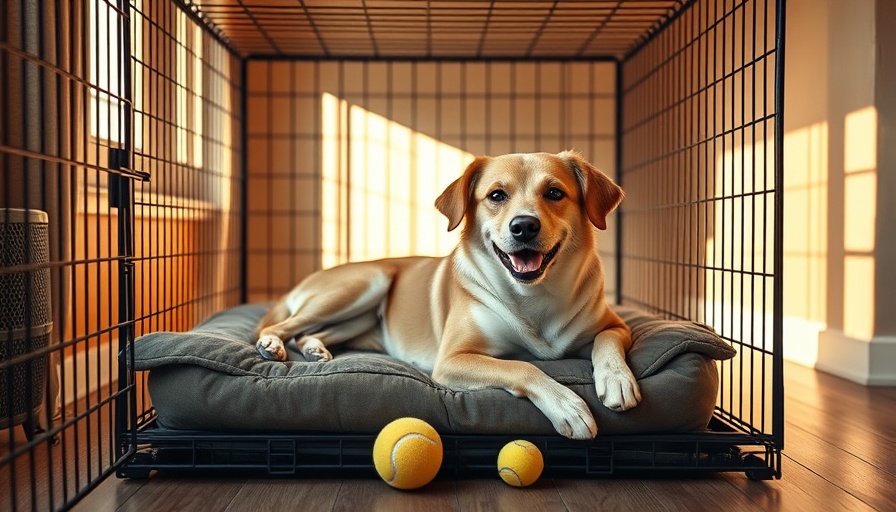
Embark on the Ultimate Adventure: Planning a Road Trip with Your Dog
As more pet owners embrace the idea of traveling with their furry companions, road trips with dogs are becoming increasingly popular. A well-planned excursion can not only strengthen your bond but also create memories that last a lifetime. Whether you’re moving to a new city, visiting family, or simply exploring the great outdoors, preparing adequately for the journey makes all the difference. Here’s a comprehensive guide to planning the perfect road trip with your dog that will ensure both of you have a delightful experience.
Kickoff with a Vet Visit: Health First!
Before you hit the open road, it’s essential to schedule a vet appointment. Ensuring your dog is healthy enough for travel should be your top priority, as it provides peace of mind during your journey. During this visit, make sure that all vaccinations are up to date. This is especially crucial if you're planning to cross state lines. Additionally, don’t hesitate to inquire about motion sickness solutions if your dog is prone to car sickness. Treatment options vary, and your veterinarian can recommend the best course of action tailored to your dog's needs.
Ensure Safety with Updated Identification
Proper identification plays a pivotal role in safeguarding your pet. Check that your dog’s ID tags have your current contact information. If you've moved recently or your phone number has changed, get new tags with the updated information. This small but significant step can be a lifesaver if your beloved pet goes missing in an unfamiliar area. Moreover, consider getting your dog microchipped if it’s not already. Check with the microchip company to confirm that your details are current in their database, as it will enhance the chances of your pet being returned to you should they get lost.
The Must-Have Road Trip Essentials
Creating a ‘doggy go-bag’ simplifies traveling tremendously. Pack the following essential items to ensure a comfortable trip:
- Food to last the duration of your trip (plus a couple of extra days just in case)
- Collapsible bowls for easy hydration and mealtime
- Regular medications and a pet-specific first aid kit
- Poop bags—more than you think you’ll need!
- Your dog’s favorite treats to keep them happy
- A sturdy leash and collar, as well as a familiar blanket or bed to make them feel at home
- A copy of essential medical records and vaccination certificates
- A recent photo of your dog for identification purposes
Packing these items ensures your pup remains comfortable and safe, allowing both of you to focus on enjoying your adventure!
Where to Rest: Finding Pet-Friendly Accommodations
Not all hotels or motels welcome pets, making it crucial to do your research before hitting the road. There are many resources, such as dedicated websites and apps, that help identify dog-friendly accommodations. Consider booking places that offer additional amenities, such as dog parks, pet beds, or designated walking areas, to further enjoy the trip. However, it's also a good idea to call ahead and confirm the pet policies, as these can vary widely by location.
Stay Fueled: Road Trip Snacking for You and Your Dog
Plan your travel route to give you and your dog ample break time. This means not only allowing for bathroom breaks and walks but also opportunities to eat. During these stops, opt for restaurants or picnic spots that are dog-friendly so your furry companion can enjoy some fresh air while you bite into delicious meals.
Tips to Keep Your Dog Calm and Happy
Traveling can be stressful for dogs, particularly if they aren’t used to long car rides. Consider keeping their favorite toy or blanket close by, as familiar smells can help soothe anxiety. Frequent stops allow them to stretch, explore, and relieve themselves, which promotes comfort during the journey. When you arrive at your destination, give them time to acclimate. A little downtime can make a big difference in how well your pet adjusts to the new environment.
With a bit of preparation and spontaneity, hitting the road with your dog can lead to unforgettable experiences and adventures. To truly make the most of your journey, don’t forget to account for his needs as much as your own. After all, both of you deserve a great getaway!
If you're eager to hit the road with your canine companion and make the most of your experience, go ahead and start planning today!
 Add Row
Add Row  Add
Add 




 Add Row
Add Row  Add
Add 

Write A Comment